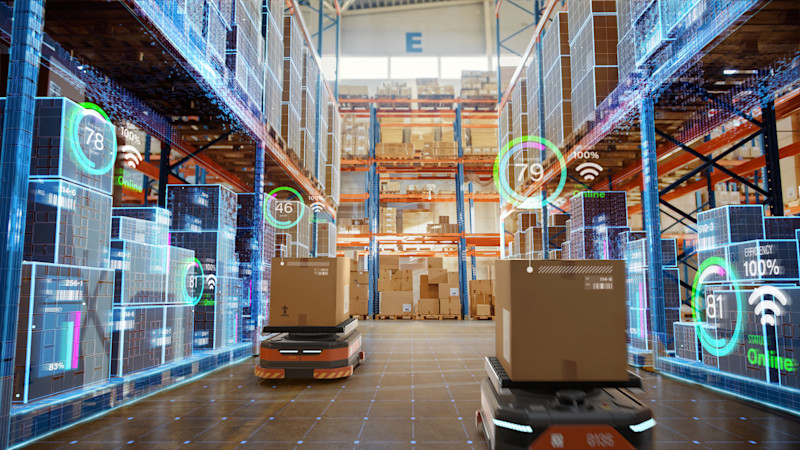Bring them all your work. Robots have got this.
Everyone’s seen the automotive plant full of robots, but next generation automation solutions are solving problems in industries ranging from construction to agriculture.
AMT's Technology Issues Committee and their partners discussed the boom in robotics during a technology summit. Here’s a little more about how these revolutionary tools are changing diverse industries.
Robots Building
From laying brick to installing rebar, robots are building. In an industry where workforce challenges have been around for decades, robots are taking over construction jobs that include repetitive tasks or heavy lifting. For instance, robots can lay 2,000 more bricks per hour than a human mason, with no risk of injury. This automation allows the human tradesperson to focus on more complex and creative tasks while the robot builds a standard wall.
In the area of 3D-printed construction, robots do the finishing work necessary to complete a home after the large pieces are printed. Additionally, humanoid construction robots now have the ability to carry materials, install drywall, and complete other repetitive tasks.
Robots Serving
In the service industry, workforce challenges existed long before the pandemic. With increased agility and broader programming options, robots can take on jobs people don’t want, such as washing windows or taking out trash. Advances in humanoid robots are opening more possibilities, including automated servers or bussers.
Robots Picking, Placing, and Packing
Perhaps no industry has seen more astronomical growth than e-commerce. And how do all those happy little packages end up on your doorstep? Most of them are packed, picked, or placed at some point along their journey by a robot. The market for mobile robots like the ones frequently used in large-scale warehouses is growing rapidly.
According to Joe Gemma, chief revenue officer at Wauseon Machine and Manufacturing, a leader in robotic automation solutions, “Revenue for mobile robots hit almost $3 billion in 2021, and there are predictions that revenue will surpass $30 billion by 2030.” He continues, “These robots are changing the workforce and changing what’s possible for e-commerce because volume is irrelevant to them. They are performing tasks that are an ergonomic nightmare for humans — like picking up boxes all day.”
Robots Farming
A growing population means a growing demand for food. But who will grow it all? With improved automation capabilities come new opportunities. Robots now have better grip and more dexterity, allowing end effectors to work more like human hands. Robots can plant crops and weed gardens using mobile platforms to move about freely. Food manufacturers are also deploying robots to butcher and sort foods.
Robots Learning
Increasingly robots can learn. Using vision and AI tools, robots are now able to make comparisons and “recognize” things. However, Gemma points out that one of the remaining challenges is how long it can take robots to learn—making design flexibility essential.
“When you are in a high-volume production environment, it is hard to take the time to let machines learn. Product lifecycles are also shorter than ever before,” he explains. “Modern automation systems have to be adaptable and flexible from the start. When products are constantly changing, then the manufacturing equipment used to make them has to change as well.”
Robots as a Service
Software as a Service is commonplace by now, but Robots as a Service (RaaS) is a newer concept. RaaS allows companies to use automation equipment on a pay-as-you-go or subscription basis. Instead of buying one expensive robot or cobot, companies can rent robots when they need them (maybe during a busy season or product roll out). Gemma explains that RaaS is growing rapidly, with ABI Research predicting there will be 1.3 million installations of RaaS by 2026, generating $34 billion in revenue.
Robots Helping You
The expansion in robotics adoption is driving growth in traditional manufacturing and many other industries. With new capabilities and increased options, robots can help save and create jobs, keep companies competitive, and drive future innovation. What can a robot do for you or your clients?
We’re sure to see a myriad of new robots make their debut at IMTS 2024, specifically in the Automation Sector, accelerated by SPS – Smart Production Solutions, which will be in the North Building. AMT collaborated with the Mesago Messe Frankfurt Group, producers of SPS – Smart Production Solutions, to create the Automation Sector. Register now at IMTS.com/Register.





